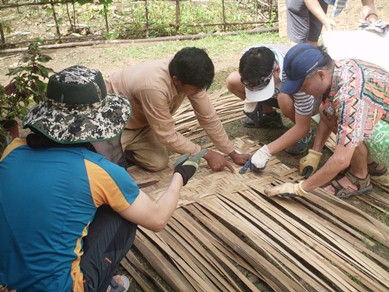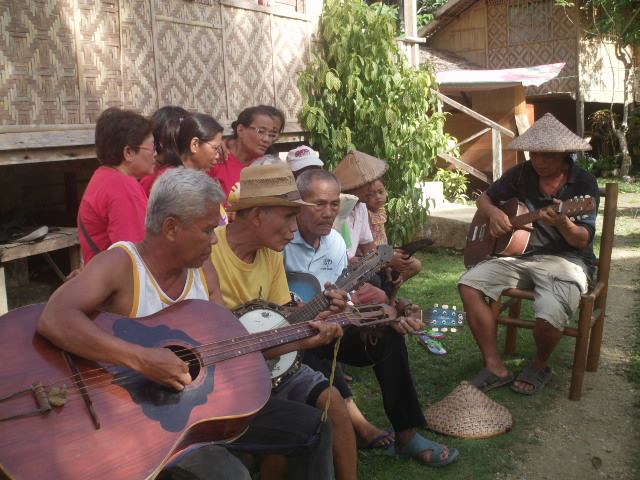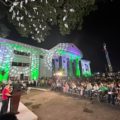TAGBILARAN CITY – The Philippine Visual Arts Festival Bohol 2018 caught Boholanos and Central Visayas by surprise with its varied art offerings, including art installations that used the island province’s iconic heritage landscapes as backdrops.
With the theme, “Art in the Heartland: Heritage and the Visual Arts”, the July 22-25 arts festival was set against Bohol’s rich ecological and cultural landscape, where heritage was source and trajectory for reflection and refraction of themes, ideas and issues through the visual arts.
Artist-designer Leeroy New built a gigantic bamboo installation with the iconic geologic wonder Chocolate Hills as background.
The Chocolate Hills became the inspiration, media and canvas of the temporary bamboo art installation, noted architect Liza Macalandag. It is like “paradise interrupted!” she said in a post.
“This is such an artistic wonder: an art installation in a heritage site!” added Bohol cultural guru Lutgardo Labad.
The whale-shaped skeletal blimp, built in three days by Leeroy and a team of young Boholano artists, was a conversation piece and one of the installation artworks created for the Philippine Visual Arts Festival (PVAF) Bohol 2018.
The festival gathered some 100 visual artists, including some 40 of Bohol’s own, from all over the country to celebrate, reflect and refract on the country’s heritage and the visual arts.
Unveiled on the same day at Abatan River in Cortes town was an art installation called ‘Cogtong sa Suba,’ conceptualized and designed by Procopio Resabal Jr., and executed mainly by Boholano sculptor Pedro Angco.
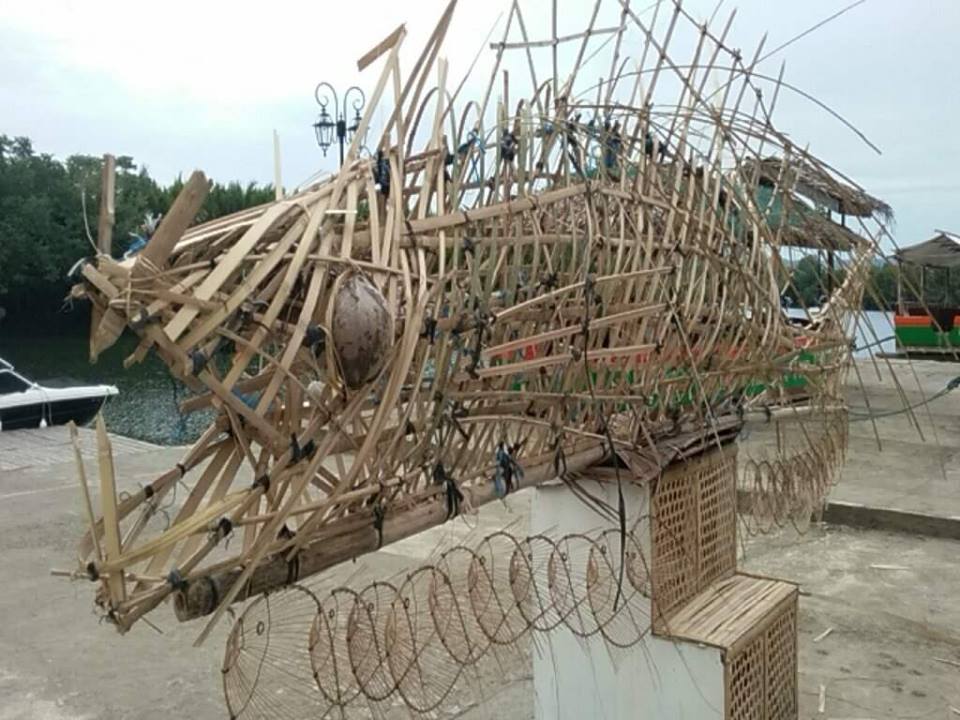
Cogtong sa Suba Installation in Abatan.
Made of bamboo, the modestly scaled piece was inspired by a popular myth about a big fish in the Abatan River heritage site, an embodiment of the river guardian watching over a ‘lingganay ugis’ or a silver bell supposedly thrown in the middle of the estuary in the mid-18th century.
The festival aimed to “investigate and navigate different heritage landscapes and structures as sites to reflect and animate heritage and as venues to interrogate issues of cultural development as the sites become potential sources for heritage preservation or degeneration,” the PVAF said.
Supported by the office of the Bohol governor through the Center for Culture and Arts Development (CCAD), the festival events were organized by the National Commission for Culture and the Arts (NCCA) and the Bol-anon United Sector Working for the Advancement of Community Concerns, Inc. (BUSWACC) through the National Committee on Visual Arts.
The festival kicked off July 22 at the Carlos P. Garcia Café with a night billed as ‘Balut, Beer ug Balak’ which rewarded each poem reader with a beer, balut and music by a noted local band Kasikas sa Tadiyandi. Kasing Sining performed excerpts from the local musical ‘Dagon sa Hoyohoy.’
Workshops on ‘Laser Cutting and Engraving’ at the Bohol FABLAB and ‘Creature Features: Clay Molding’ with Kester Duran at the Bohol Cultural Center and Mural Fest on ‘The Bohol We Love’ Part I opened the second day of the festival.
A panel of artist speakers from Luzon, Visayas and Mindanao talked about the “State of the Visual Arts in the Regions,” followed by another panel of speakers on “The Beautiful vs. the Ugly in Art” with Leo Abaya and Vincent Padilla as panelists.
PVAF Bohol 2018 also featured a curated exhibit showcasing some 70 art works by Boholano and regional artists from across the country. Each Boholano delegate to the festival was asked to submit an artwork on the theme: ‘KABILIN PARA SA KAUGMAON’ or ‘HERITAGE FOR THE FUTURE’ reflecting on the legacy that the Boholano artists can pass on to future generations.
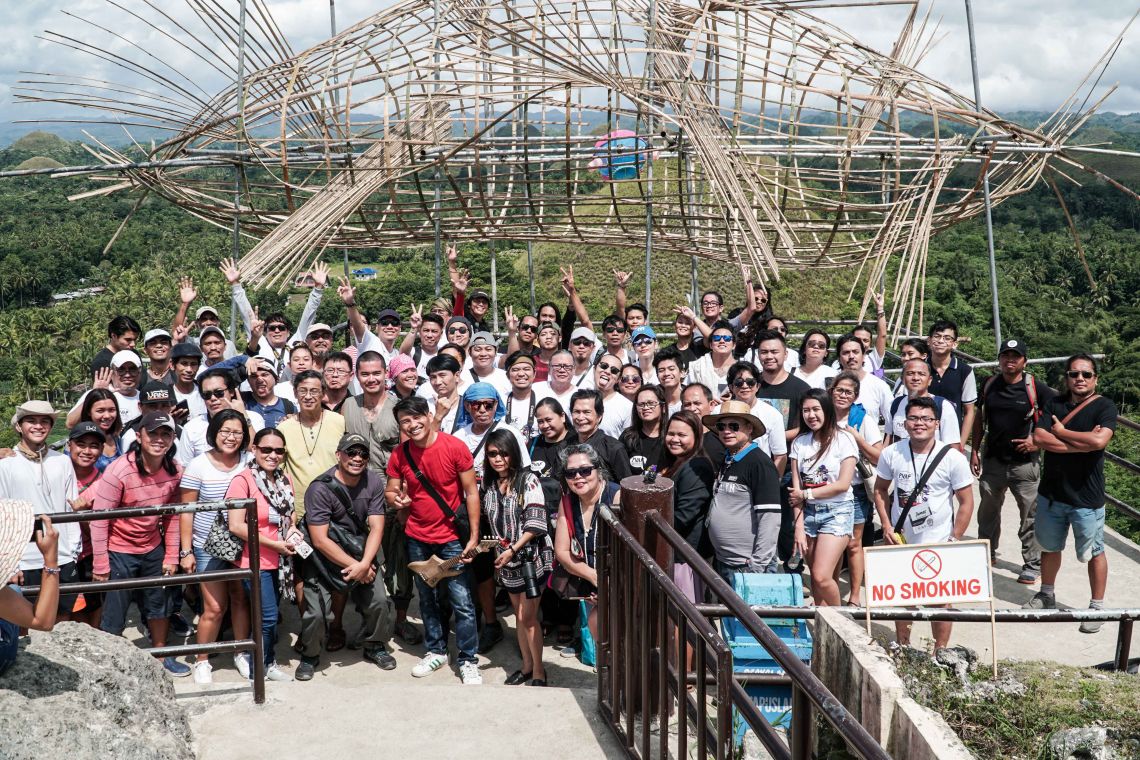
PVAF Delegates Pose with Leeroy New’s Installation. (Photo by Rhapsody Concepts)
Dubbed ‘BAHANDI’ or treasure, the exhibit organizers urged the artists to “draw from or reflect on the various facets of our heritage — cultural, natural, tangible and intangible — which are our treasures or bahandi.”
“Our treasures cover our historical experiences, cultural traditions and practices, as well as the environment, both natural and supernatural, which have been embedded in our way of life and in the way we deal with people and our surrounding,” according to an information sheet from the festival’s exhibit organizers.
“We hope to see paintings, sculptures, installations, performance arts, multi-media, interactive, multidisciplinary portrayals of history, life, lifestyles, ideas, and images to dot Bohol’s array of heritage settings. We hope to see our Bohol communities witness their common heritage landscapes transform with new explosive ideas,” said PVAF director Joy Apat of BUSWACC before the festival.
Professor Leo Abaya, PVAF exhibit curator who comes from Bohol, publicly lamented at the exhibit opening: “We have become tenants in our own province,” referring to the fact that the exhibit had to be held at the Island City Mall since the National Museum in Bohol refused to give the Bohol artists gallery space in the newly restored provincial capitol.
The varied subjects and expressions in the BAHANDI paintings, sculptural works, installations and performance arts in the 2018 Visual Arts Festival “converge on the value of cultural and natural heritage as guide and impetus for a sustainable future,” nurse and artist Daisy Daquipa said at the opening.
NCCA Visual Arts Committee head Egay Fernandez, in his closing remarks, urged the artists to be “chroniclers of society” as they create, depict and portray images that can move the future generation to action to achieve a better and more sustainable future.
On July 24, the artist delegates took a whole day art pilgrimage dubbed ‘Panaw sa Alampat’ where they reflected on the exquisite details of the retablos of the Albur church that was worked on by local sculptors, visited the Loay Museum, and took a cruise along Loboc River.
They then went to the Chocolate Hills of Carmen town and marveled at the untitled bamboo art installation of Leeroy New.A group of some 40 artists then proceeded to the Abatan River in Cortes town where they were treated to a natural heritage ride, the unveiling of the ”Cogtong sa Suba” installation, and a performance by the Cortes youth cultural collective about a woman leader Wadji who pursued raiders during her time.
Collaborative art events held July 25 at Panglao Island Beach called ‘Layag sa Diyandi’ capped the festival with a performance art by Sam Penaso, Herminigildo Pineda, and Marvin Abrao, a joint mural painting, and percussion music from the Tadiyandi music team.

